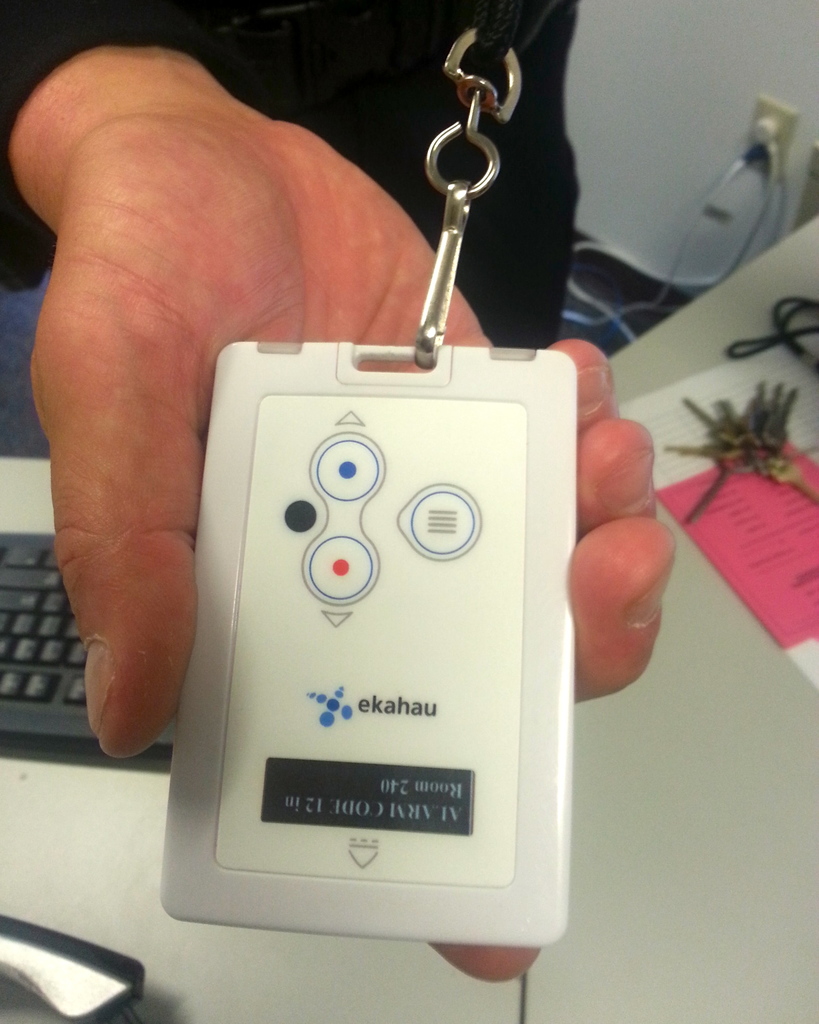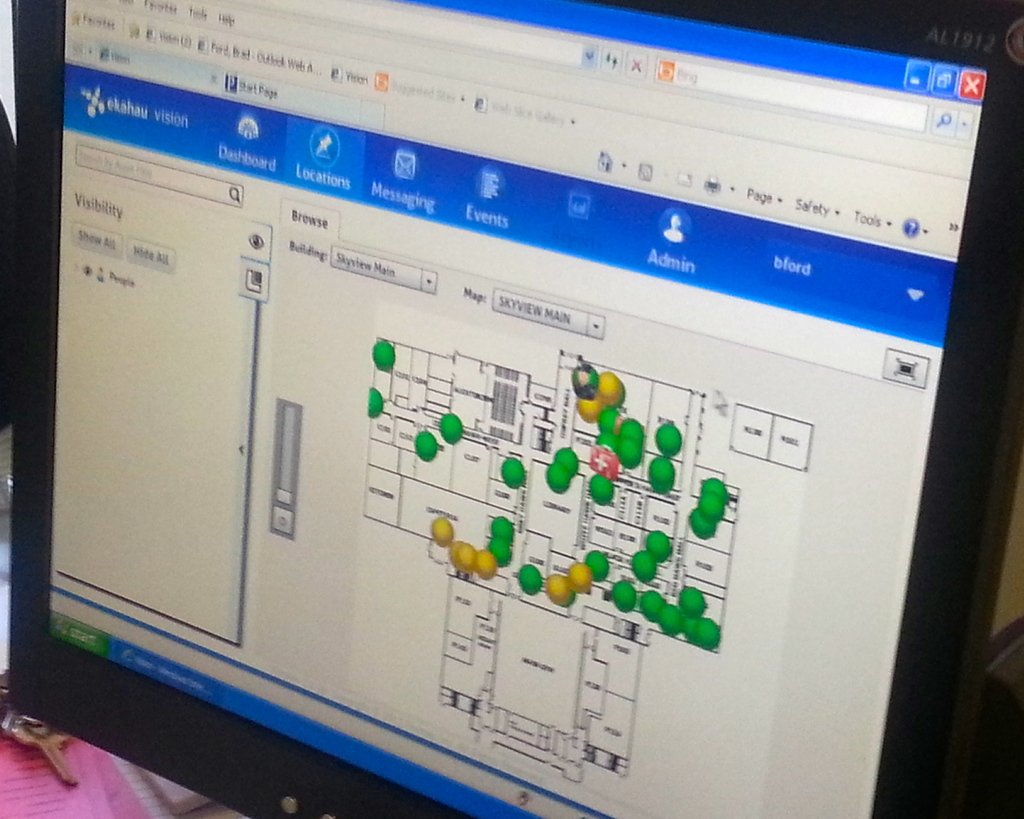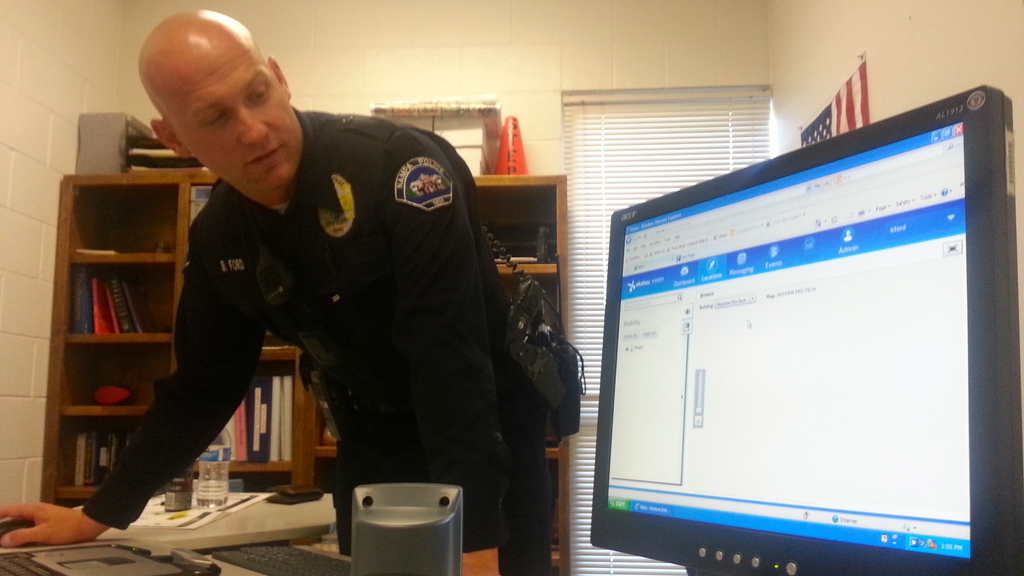School Resource Officer Brad Ford thinks a new wireless security system used in Nampa has the potential to revolutionize police response to emergencies.
In April, Skyview High School staff began testing location-based alert security systems developed by the Virginia company Ekahau.

Skyview was the first school in the country to use the system, but in the past month, two other schools outside of Idaho have embraced it.
School staffers wear one of 100 white wireless security badges the size of an iPhone. The badges use radio frequencies and the school’s WiFi system to communicate with each other, and with a computer system that Ford, police dispatchers and school administrators monitor.
In an emergency, anyone wearing a badge can yank the device’s lanyard off to order a lockdown, or press a button to report a medical emergency or student safety incident that does not require a lockdown.
For Ford, the revolutionary part of the system is that anyone wearing a badge anywhere in the building can initiate a lockdown and notify police within 4 seconds.
Recently, it took four minutes to notify dispatchers of a fire drill without using the badges.
“Used the right way, we as law enforcement can change the way we respond,” Ford said. “It’s necessary to bridge the gap between school and the police, and I feel like we’re doing that.”
Through the system, the exact location of everyone wearing a badge is displayed on a computerized school map. The system is so precise it even shows teachers moving about their classrooms or hallways in real time.

In an emergency, that information will allow police to know exactly where a lockdown was initiated, as well as the location of staff members.
That means police don’t have to waste as much time talking with Ford or administrators to figure out how to enter the building.
The system tracks teachers’ movements on campus (they don’t take the badges home), but principal Kim Bekkedahl said staffers don’t view it as a form of Big Brother intrusion. Instead, once the program was announced, teachers repeatedly asked for the badges sooner.
“Any measure of safety you can provide for school – students, teachers and parents – people are grateful for, and this is one of the most unique things I have ever (seen),” Bekkedahl said.
University of Helsinki researchers originally developed the Ekahau system, and the company has been awarded 10 patents. The program was originally used in health care and mental health settings. But Ford, school counselor Mandy Petty and Petty’s husband, Jason, approached the company about expanding the technology to schools.
Skyview spent $32,000 on its system, and paid for it during a district financial crisis through grant money.
The system can be used in rural or urban schools, said Mark Norris, Ekahau’s president and CEO, and costs about $30 to $40 per student in one-time startup fees. After that, schools are charged a small annual maintenance and support fee.
The only technical requirement is that a school must have WiFi.
“If you’re going to spend the money to put something in place you will hopefully never use, it’s nice to know we have a solution in place that can also help on a daily basis with medical emergencies and disciplinary events,” Norris said.
Following the Newtown, Conn., school shooting in December, Ford, Bekkedahl and the Pettys decided they needed a more secure system for Skyview and its 1,279 students.
They decided it was unrealistic to rely on the previous system, where teachers would use in-room phones to call for a lockdown or assume a secretary or principal would immediately notice a criminal walking through the front door.
So much could go wrong, they thought, if a criminal entered through a back door undetected or walked into the detached professional-technical wing. What’s more, they realized a criminal could enter a classroom and come between a teacher and the in-room phone.
Skyview’s changes are part of a larger school safety conversation taking place across Idaho and around the world. In January, Gov. Butch Otter appointed a school safety task force to work with retired Idaho State Police Col. Jerry Russell. On Oct. 2, the Legislature’s K-12 interim committee is set to take up the topic of school security.

Ford doesn’t kid himself into thinking the system will prevent all school crime.
Instead, he views the badge system like a seat belt or a fire alarm – one additional safety precaution that could buy time or improve the odds in a crisis.
And he and Bekkedahl both endorse it wholeheartedly, saying they believe it can be replicated in other schools throughout Idaho and elsewhere.
“It allows us to get to kids faster, render the aid needed to them and get things back normal as fast as possible,” Ford said.
